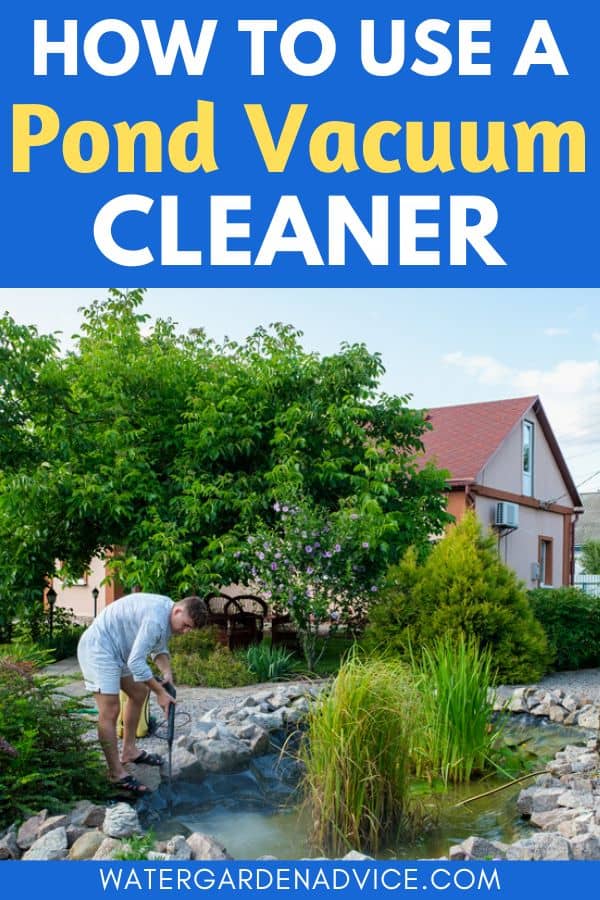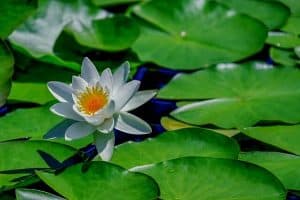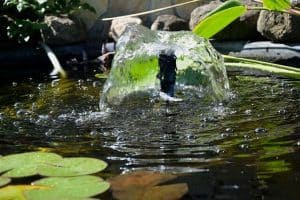Using a pond vacuum to clean your backyard pond is pretty simple and can save you a lot of time and energy compared to other pond cleaning methods.
These handy devices make it easy for you to regularly clean your pond without disrupting the fish or damaging the plants, and you’ll soon notice the difference it makes in keeping your pond water clear and free of debris.
In this article I’ll share my tips for selecting and using a pond vacuum to keep your pond clean.
This post contains affiliate links. Please read the disclosure for more info.
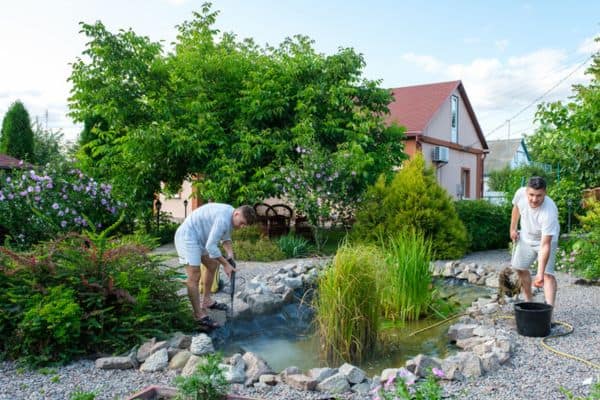
Why Use a Pond Vacuum Cleaner
Maintaining Water Quality
Using a pond vacuum cleaner is essential for maintaining the water quality in your pond.
Over time, debris such as leaves, dirt, and algae can accumulate and negatively impact the water quality.
This can lead to unhealthy living conditions for your fish and plants.
One significant aspect of water quality is the oxygen levels in the water.
Algae growth and decaying organic matter consumes oxygen, leaving less oxygen for your fish to breathe.
By using a pond vacuum to remove this waste, you can maintain a healthier oxygen concentration in the water and keep your fish happy and healthy.

Removing Debris and Sludge
Pond vacuum cleaners are specially designed to remove debris and sludge from the bottom of your pond.
This waste is made up of fish droppings, fallen leaves and organic matter that accumulate over time and can become a breeding ground for harmful bacteria and parasites.
By removing the debris and sludge, you reduce the risk of disease, leading to a healthier pond environment for your fish and other inhabitants.
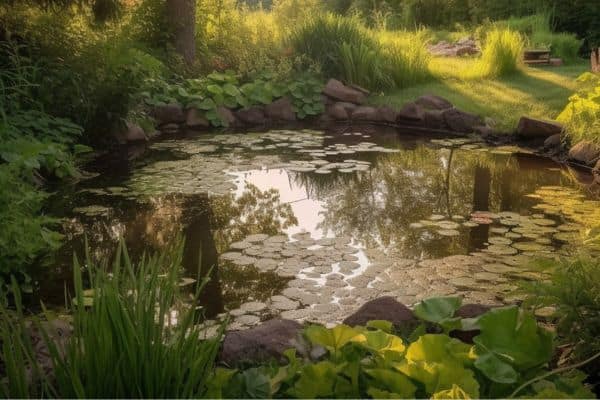
Key Features to Consider
When choosing a pond vacuum cleaner, there are several features you should consider to make sure you’re getting the best product for your needs.
Suction Power
Suction power is an essential factor for a pond vacuum cleaner to effectively remove debris, sludge, and algae from your pond.
A vacuum with strong suction will make the job faster and more efficient, so look for a model that offers enough power to handle the size and depth of your pond.
Suction Hose Length
The length of the suction hose is an important consideration when choosing a pond vacuum cleaner.
You want a hose that’s long enough to reach all areas of your pond without straining or overstretching.
A longer hose will give you more flexibility, so you can clean your pond thoroughly without constantly needing to reposition the vacuum.
Discharge Hose Length
The discharge hose length is another crucial aspect, because a longer discharge hose will allow you to direct the waste water further away from your pond.
Preparing the Pond
Remove any nets or covers that have been protecting your garden pond before you get started.
Use a long handled net to remove any twigs, branches or large leaves that have fallen into the pond.
If you have potted plants in the pond, it’s a good idea to gently move them to one side to avoid damaging them during the cleaning process.
Selecting the Right Nozzle
Pond vacuum cleaners often come with a variety of nozzles designed to target different types of debris and contours in the pond bed.
Examine your pond to determine the type of debris you’ll be dealing with, such as silt, leaves, or algae.
Choose the nozzle that is best suited to your pond’s needs. For example, a narrow nozzle may be better for cleaning in between rocks, while a wider nozzle is best for picking up leaves.
Operating the Vacuum Cleaner
With the pond vacuum cleaner set up on dry land beside your garden pond, attach your chosen nozzle to the telescopic pipe.
Make sure that the vacuum is far enough away from the edge of the pond so that it won’t fall in the water while you’re vacuuming.
Move the vacuum head slowly back and forth over the pond bed, taking care to avoid damaging any pond plants.
Reach right up to the sides and down to the bottom of the pond to ensure that all areas are cleaned.
Disposing of Waste
As you vacuum your pond, the collection container will collect the waste.
If you have a single chamber pond vacuum the motor will shut off until the chamber drains.
Twin chamber pond vacuums remove the waste from the pond and discharge it without needing to turn the suction off, which makes the job a lot quicker and easier.
Once the cleaning process is finished, turn off the vacuum cleaner, remove the filter and collection container and give them a rinse with clean water.
Frequently Asked Questions
Do pond vacuums harm fish and aquatic life?
Pond vacuums don’t harm fish or other aquatic life in the pond.
They’re designed to clean the pond without disrupting the pond ecosystem, but you should be cautious when using the vacuum around delicate plants and small fish.
Move the vacuum head slowly and carefully to avoid sucking them up.
You can remove small fish from the pond before you start vacuuming to be on the safe side, but if you do accidentally suck one of them up, it will be released by the discharge hose.
What maintenance and care is required for a pond vacuum?
Taking care of your pond vacuum is relatively simple. After each use, make sure to clean the filter, collection container and remove any debris trapped in the vacuum head.
Check and replace any worn hoses or attachments to ensure your pond vacuum continues to work efficiently.
How often should I clean my pond using a pond vacuum?
The frequency of pond vacuuming depends on several factors such as the size of your pond, the number of fish, and the amount of plants in and around the pond.
It’s a good idea to use your pond vacuum every 6 to 8 weeks during the summer and fall, and less often during winter.
Keep an eye on the water quality and clarity as well as the amount of debris buildup on the pond floor.
Try to avoid using the vacuum during the spring months because you could disrupt the breeding process of insects, fish, frogs or other aquatic animals that live in and around the pond.
Here’s a quick video that will help you get the most out of your pond vacuum.
RELATED ARTICLES
- How To Fix Green Pond Water
- 10 Pond Mistakes To Avoid
- How To Make Your Pond Water Clear Blue
- How to Clean a Neglected Pond
So there are my tips for using a pond vacuum to clean your garden pond.
Are you on Pinterest? I have boards dedicated to Garden Ponds and Pond Maintenance that you may find helpful.
